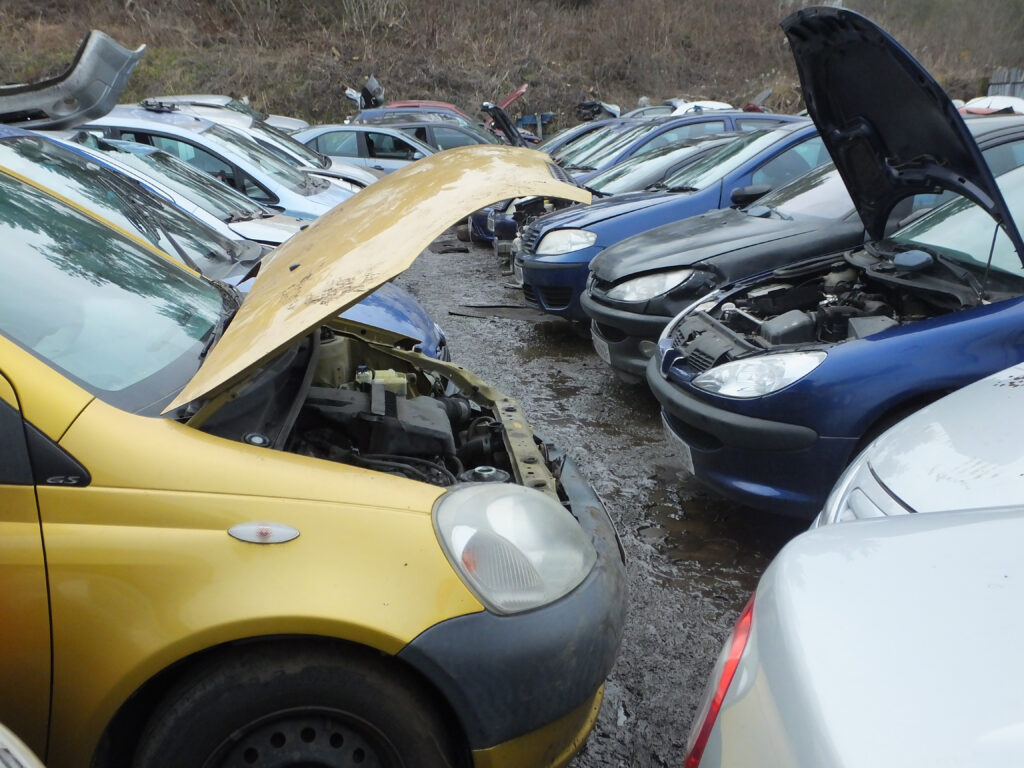Is motor GAP insurance included in my standard motor insurance policy?
By Bethan Harper

Navigating the world of car insurance can sometimes feel like trying to learn a foreign language, especially with such an array of coverage options available.
One concept that confuses some motorists is which types of insurance are included in their standard motor insurance policy and which aren’t.
Most people know they’ll need to purchase breakdown cover separately from their standard policy, but what about motor GAP insurance?
As vehicles rapidly depreciate and loan balances remain substantial, understanding the role of motor GAP insurance and whether you’re already covered could be the difference between financial security and a financial nightmare should your vehicle be written off.
In this article, we’ll help you understand more about motor gap insurance, what it covers, and most importantly, whether it’s nestled within your standard motor insurance or stands as a separate entity.
Jump straight to a specific section or read on for the full piece.
- What is motor GAP insurance?
- What’s included in motor GAP insurance?
- What isn’t included in motor GAP insurance?
- Does standard motor insurance cover GAP insurance?
- Comparing motor GAP insurance with standard motor insurance
- How to choose GAP motor insurance

What is motor GAP insurance?
Motor gap insurance is a specific type of coverage designed to bridge the difference (or ‘gap’) between what your car is worth and what your insurer is prepared to pay should your vehicle be written off or declared a total loss. (Typically, you’ll also be covered for outstanding payments if you have purchased your car on finance.)
If your car is written off, your standard motor insurance will usually cover you financially for the vehicle’s current market value, not the price you paid for it. And, since cars depreciate rapidly and a new car’s value can fall significantly, without this type of cover you could find yourself significantly out of pocket.
For example, if you purchased your car for £5,000, but its market value is now only £4,000, your insurance provider will typically offer you the current value in the case of a write-off. That would leave you £1,000 out of pocket (which is a large sum for most people). Motor GAP cover would bridge this discrepancy and payout for that discrepancy.
Also see: Does my motor insurance policy cover scratch and dent insurance?
What is included in motor GAP insurance?
Not all motor GAP insurance policies are the same, so what’s included in your coverage will vary depending on the provider you choose. However, as motor GAP insurance is designed to protect your financial investment in a vehicle should it be declared a total loss, there are some features which are typical for most providers to offer.
These include:
- Outright purchase coverage: This covers the difference between what you purchased your car for (if you bought it outright) and what your standard motor insurance provider is willing to pay.
- Loan/finance GAP coverage: This pays the difference between the actual cash value of your car and the outstanding loan amount.
- Lease GAP coverage: For leased cars, it covers the difference between what you’ve paid and what you still owe on the lease.
Some policies might also offer value-added GAP insurance. This goes beyond just covering the loan difference and pays an extra percentage over the car’s value.
Typically, your motor GAP policy will be valid if your vehicle is written off or declared a total loss as a result of fire, theft, damage sustained as a result of an accident, malicious damage or flooding

What isn’t included in motor GAP insurance?
While gap motor insurance provides a safety net in certain financial shortfalls, there are some common exclusions. These include:
- Deductibles: Your insurance deductible isn’t covered by most GAP policies. If your car is totalled, you’ll still be responsible for the deductible.
- Extended warranties: Amounts added to your loan for warranties aren’t typically covered.
- Missed payments: Overdue payments and the associated late fees are often excluded.
- Roll-overs from previous loans: If you had negative equity that you rolled into your new car loan, this won’t be covered by most providers.
There are also a few factors that can invalidate your insurance, including:
- Theft when your vehicle was left unoccupied and unlocked.
- Where the vehicle is written off when being driven, with your consent, by someone who does not hold a valid driving licence.
- Vehicles used for emergency or military purposes, taxi, courier or delivery vehicles (unless you purchase a specific hire and reward policy.
- Vehicles used for road racing, rallying or other competitive event.
If your vehicle is stolen by a person who has access to the keys
However, as previously mentioned, not all policies are the same, so always check your policy wording to find out what is excluded from your chosen cover.
See also:What are the benefits of motor breakdown insurance
Does standard motor insurance cover motor GAP insurance?
Standard motor insurance typically offers coverage for the actual cash value (ACV) of your vehicle. This means that, in the event of a total loss, your policy will reimburse you for the current market value of your vehicle, minus any deductible. Given that vehicles depreciate quickly, the ACV can be considerably less than what you originally paid or what you owe on your loan or lease.
This is where the confusion often arises: while standard policies provide vital protection against a range of risks, they usually don’t automatically include motor gap insurance. Hence, if you want the extra layer of protection gap insurance offers, it’s often a separate purchase or add-on.
However, it’s always best to check with your provider what is and isn’t included in your standard policy as this could differ.
Comparing motor GAP insurance with standard motor insurance
Understanding the difference between GAP motor insurance and standard motor insurance is key to improving your overall motor protection. But what most will discover is that the two policies actually work hand-in-hand, rather than against each other.
Take a look at the table below to better understand how GAP insurance and standard motor insurance compare to each other and work together to make sure your financial cover is as extensive as possible.
| Standard motor insurance | Motor GAP insurance | |
| Coverage objective | Compensates for damages, theft, or loss based on the car’s current market value when your vehicle is written off. | Addresses the ‘GAP’ between a vehicle’s depreciated value and the outstanding loan or lease amount. |
| Premiums | £512 annually (Go Compare, 2023) | £125.42 annually (Save More Money, 2023) |
| Necessity | Standard motor insurance is a legal requirement for all UK motorists. | GAP insurance is optional but could prove exceptionally beneficial. |

How to choose GAP motor insurance
If you’re considering motor gap insurance, keep the following pointers in mind:
- Assess Your Needs: If you’ve paid for your car outright, made a down payment, have a long-term loan, or drive a lot (leading to faster depreciation), GAP insurance is usually a good idea.
- Purchase Options: You can buy GAP motor insurance from a range of providers so compare what’s on the market to find the policy that best suits you.
- Price Comparison: Premiums can vary. Compare prices and coverage options before making a choice. And remember, the cheapest option doesn’t always offer the most value, so do your research.
- Check for Overlaps: If your car loan is nearing completion, you might not need GAP coverage. Ensure you’re not buying unnecessary coverage.
The bottom line
While motor gap insurance is an essential tool for many drivers, it’s not typically part of standard motor policies. Understanding the distinctions between these different types of cover ensures you’re adequately informed to stay protected, without overspending.
If you’re interested in motor GAP insurance and are looking for a policy that not only offers a variety of cover types but could even save you money in the long run, Save More Money might just have the right option for you from under £10 a month.


